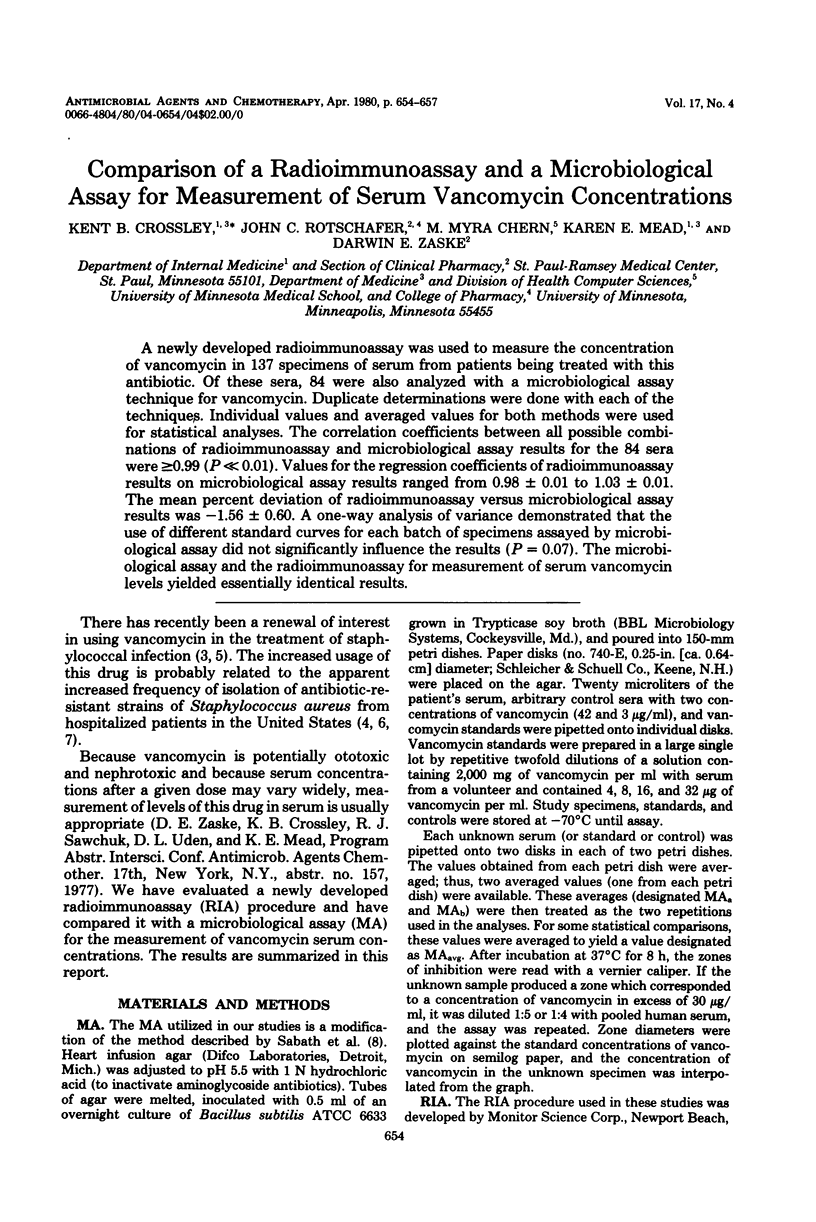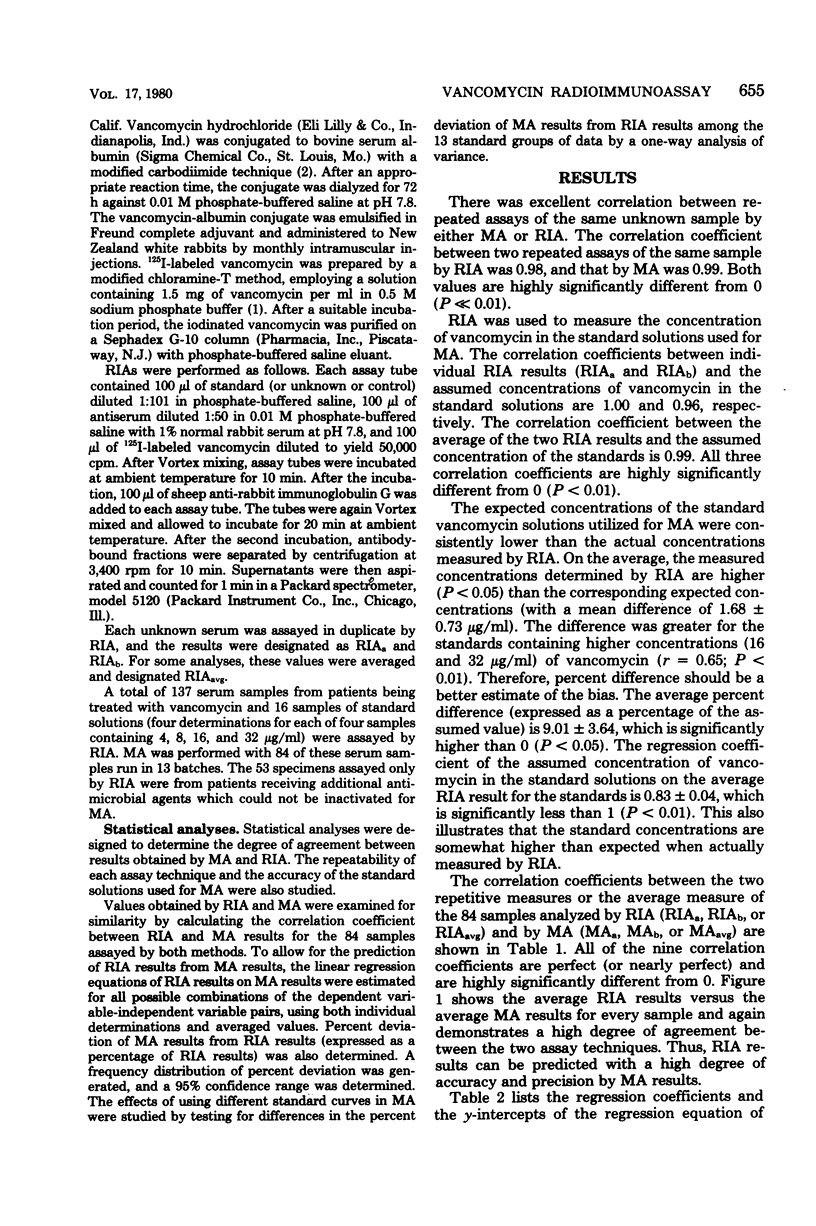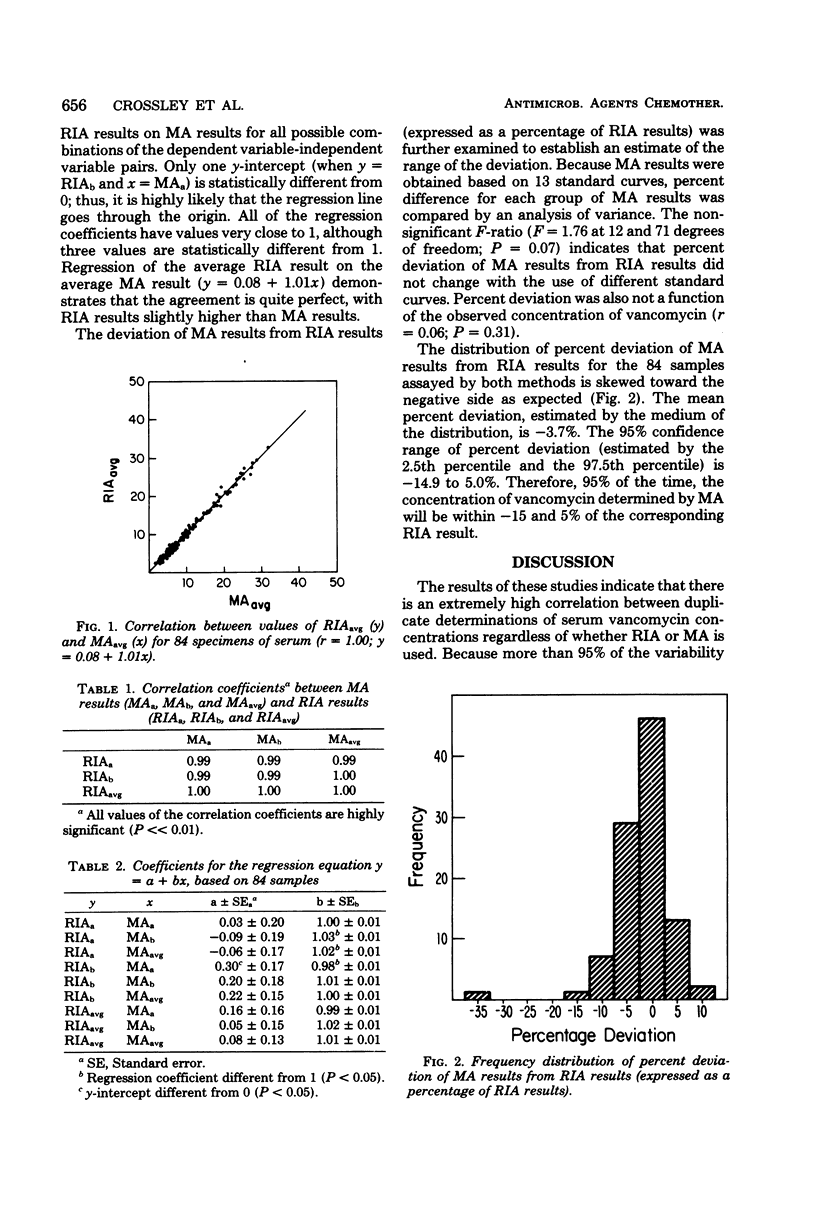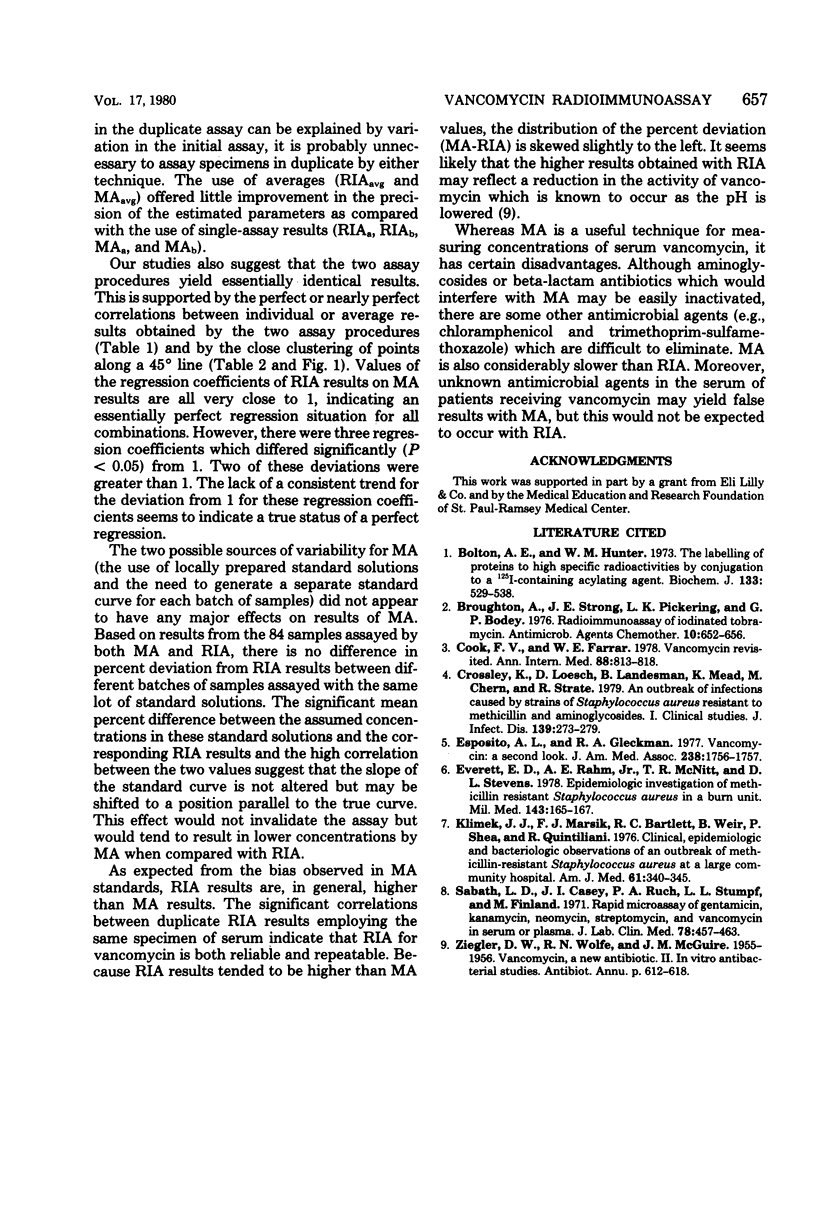Abstract
A newly developed radioimmunoassay was used to measure the concentration of vancomycin in 137 specimens of serum from patients being treated with this antibiotic. Of these sera, 84 were also analyzed with a microbiological assay technique for vancomycin. Duplicate determinations were done with each of the techniques. Individual values and averaged values for both methods were used for statistical analyses. The correlation coefficients between all possible combinations of radioimmunoassay and microbiological assay results for the 84 sera were greater than or equal to 0.99 (P less than 0.01). Values for the regression coefficients of radioimmunoassay results on microbiological assay results ranged from 0.98 +/- 0.01 to 1.03 +/- 0.01. The mean percent deviation of radioimmunoassay versus microbiological assay results was -1.56 +/- 0.60. A one-way analysis of variance demonstrated that the use of different standard curves for each batch of specimens assayed by microbiological assay did not significantly influence the results (P = 0.07). The microbiological assay and the radioimmunoassay for measurement of serum vancomycin levels yielded essentially identical results.
Full text
PDF



Selected References
These references are in PubMed. This may not be the complete list of references from this article.
- Bolton A. E., Hunter W. M. The labelling of proteins to high specific radioactivities by conjugation to a 125I-containing acylating agent. Biochem J. 1973 Jul;133(3):529–539. doi: 10.1042/bj1330529. [DOI] [PMC free article] [PubMed] [Google Scholar]
- Broughton A., Strong J. E., Pickering L. K., Bodney G. P. Radioimmunoassay of iodinated tobramycin. Antimicrob Agents Chemother. 1976 Oct;10(4):652–656. doi: 10.1128/aac.10.4.652. [DOI] [PMC free article] [PubMed] [Google Scholar]
- Cook F. V., Farrar W. E., Jr Vancomycin revisited. Ann Intern Med. 1978 Jun;88(6):813–818. doi: 10.7326/0003-4819-88-6-813. [DOI] [PubMed] [Google Scholar]
- Crossley K., Loesch D., Landesman B., Mead K., Chern M., Strate R. An outbreak of infections caused by strains of Staphylococcus aureus resistant to methicillin and aminoglycosides. I. Clinical studies. J Infect Dis. 1979 Mar;139(3):273–279. doi: 10.1093/infdis/139.3.273. [DOI] [PubMed] [Google Scholar]
- Esposito A. L., Gleckman R. A. Vancomycin. A second look. JAMA. 1977 Oct 17;238(16):1756–1757. doi: 10.1001/jama.238.16.1756. [DOI] [PubMed] [Google Scholar]
- Everett E. D., McNitt T. R., Rahm A. E., Jr, Stevens D. L., Peterson H. E. Epidemiologic investigation of methicillin resistant Staphylococcus aureus in a burn unit. Mil Med. 1978 Mar;143(3):165–167. [PubMed] [Google Scholar]
- Klimek J. J., Marsik F. J., Bartlett R. C., Weir B., Shea P., Quintiliani R. Clinical, epidemiologic and bacteriologic observations of an outbreak of methicillin-resistant Staphylococcus aureus at a large community hospital. Am J Med. 1976 Sep;61(3):340–345. doi: 10.1016/0002-9343(76)90370-3. [DOI] [PubMed] [Google Scholar]
- MCGUIRE J. M., WOLFE R. N., ZIEGLER D. W. Vancomycin, a new antibiotic. II. In vitro antibacterial studies. Antibiot Annu. 1955;3:612–618. [PubMed] [Google Scholar]
- Sabath L. D., Casey J. I., Ruch P. A., Stumpf L. L., Finland M. Rapid microassay of gentamicin, kanamycin, neomycin, streptomycin, and vancomycin in serum or plasma. J Lab Clin Med. 1971 Sep;78(3):457–463. [PubMed] [Google Scholar]


